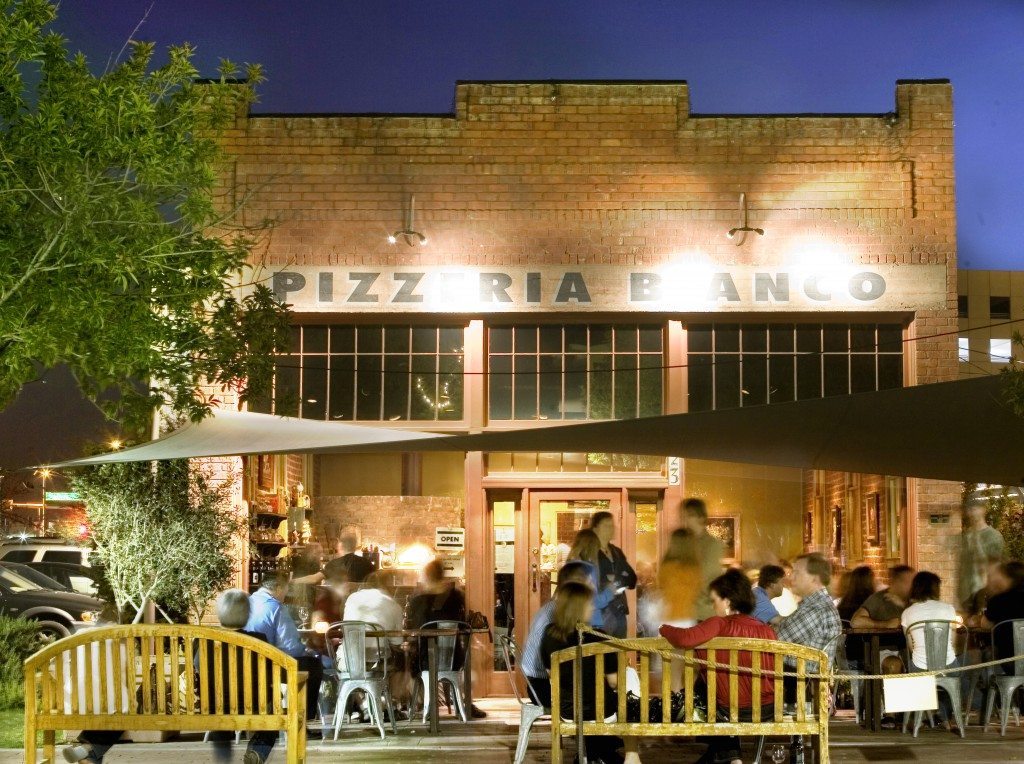It’s amazing how quickly things can change. As recently as five years ago, Downtown Phoenix was practically deserted in the evenings. It was a place people came to during the day to work, but left as soon as 5 p.m. hit. Now, Downtown Phoenix has finally become a destination for concerts, sporting events and a happening nightlife. Much of its new found popularity is attributed to the innovative restaurants that have begun springing up, drawing in customers before and after events.
“The Downtown Phoenix cuisine is becoming a center of good food, farm-to-table concepts, and a variety of locally owned restaurants,” says Douglas MacKenzie, director of communications for the Greater Phoenix Convention and Visitors Bureau. “From before a game or concert to late-night dining, the culinary scene is eye-catching and mouth-watering.”
Indeed, most of the restaurants open downtown can’t be found anywhere else. Cheuvront Restaurant & Wine Bar has been open since 2003, so owner Ken Cheuvront has witnessed the downtown makeover firsthand.
Cheuvront says the restaurant attracts most of its customers from the arts community, especially those who attend the opera, the symphony and the theater. Five years ago, he started advertising in playbills and giving to arts organizations.
“Now that more and more people are coming downtown for their entertainment needs, we see people before or after their events,” he says. “Our demographic is 35 and up, but we think of ourselves as hip.”
District American Kitchen, the full-service restaurant inside the Sheraton Phoenix Downtown Hotel, draws in theater patrons before and after shows with its live weekend entertainment.
“Theater people come to dinner before the show, then come back after for jazz music on Saturday nights,” says general manager Heinrich Stasiuk.
He says the restaurant also appeals to theater patrons because it intentionally offers dinner items that can be prepared quickly without sacrificing quality, since diners often have time constraints.
Jonathan Cullen, general manager of Kincaid’s Fish Chop & Steakhouse, says his restaurant sometimes offer discounts to those who attend the symphony.
Downtown restaurants also benefit from First Friday, the art walk that takes place on the first Friday of each month.
“First Friday is huge for us,” Cheuvront says. “Those are our biggest nights of the month. That’s a huge benefit to us.”
While the arts certainly bring a lot of people to Downtown Phoenix, so do other big events, especially professional sports games. With the Phoenix Suns and the Arizona Diamondbacks playing right next door to each other, sports fans are constantly moving through the downtown area — and of course they’re hungry.
The Phoenix Convention Center houses what Executive Chef Jesus Cibrian dubs an “upgraded food court” called Metro Marche. It incorporates various stations serving several kinds of food from Asian to American, and it’s open to the public, not just convention attendees. Although most days only two or three stations are open for lunch, Cibrian says if there’s an event taking place, they open more and extend the hours.
“We are what the guests want us to be,” he adds. “We are a chameleon.”
Not only does the convention center provide great food for the community, it provides the community with more business. Since the expansion, the convention center has drawn large numbers of convention-goers to the downtown area and to area restaurants.
“We always contact the heads of the conventions in town,” Cullen notes. By doing so, he says he attracts many convention attendees.
Another recent addition to the flourishing downtown area is Arizona State University’s newest campus. Thousands of young adults travel downtown to take classes, and many of them live there, as well. Many nearby restaurants, particularly Pasta Bar, which is only a block away from the campus, regularly see students as customers.
Even those pricier restaurants with a bigger focus on happy hours benefit from the younger demographic.
“We have a lot of employees from ASU,” Cullen says, even though most students can’t afford to dine at Kincaid’s.
Of course, a lot of downtown dining business still comes from those 9-to-5 professionals. Johnny Chu, owner of the Asian tapas and sake restaurant, Sens, says most of his customers are businesspeople on their lunch breaks or stopping by after work.
One of the biggest changes to the downtown landscape in recent years has been the addition of the light rail, which opened in late 2008. Although it was a nuisance during construction, restaurant owners agree it has ultimately brought more people and business to Downtown Phoenix.
“We were down to 30 percent of our sales” during light rail construction, Cheuvront acknowledges. “People couldn’t even get into our parking lot. But it went back up. Last year was the best year we’ve ever had.”
Chu agrees that the light rail brings more business downtown.
“On the weekends, most of our customers take it in from Tempe or Mesa, so they can avoid a DUI on the way home,” he says.
Wade Moises, owner of Pasta Bar, sees a similar trend.
“A lot of our regulars take the light rail,” he says. “They tend to take it downtown and come here for an inexpensive night on the town.”
So with some help from the new and improved dining scene, Downtown Phoenix has become one of the hottest destinations in the Valley.
“Downtown Phoenix is a little different than downtown in other cities,” says Cullen, who has watched the evolution since Kincaid’s opened 10 years ago.
“We’re in the beginning, growing stages of it. We’re finally starting to see downtown develop into what it’s going to become. It’s been good to see it happen. Everything is moving in the right direction.”
www.cheuvronts.com | www.districtrestaurant.com | www.kincaids.com | phoenix.gov/phxpccd.html | sensake.com | www.pastabaraz.com




